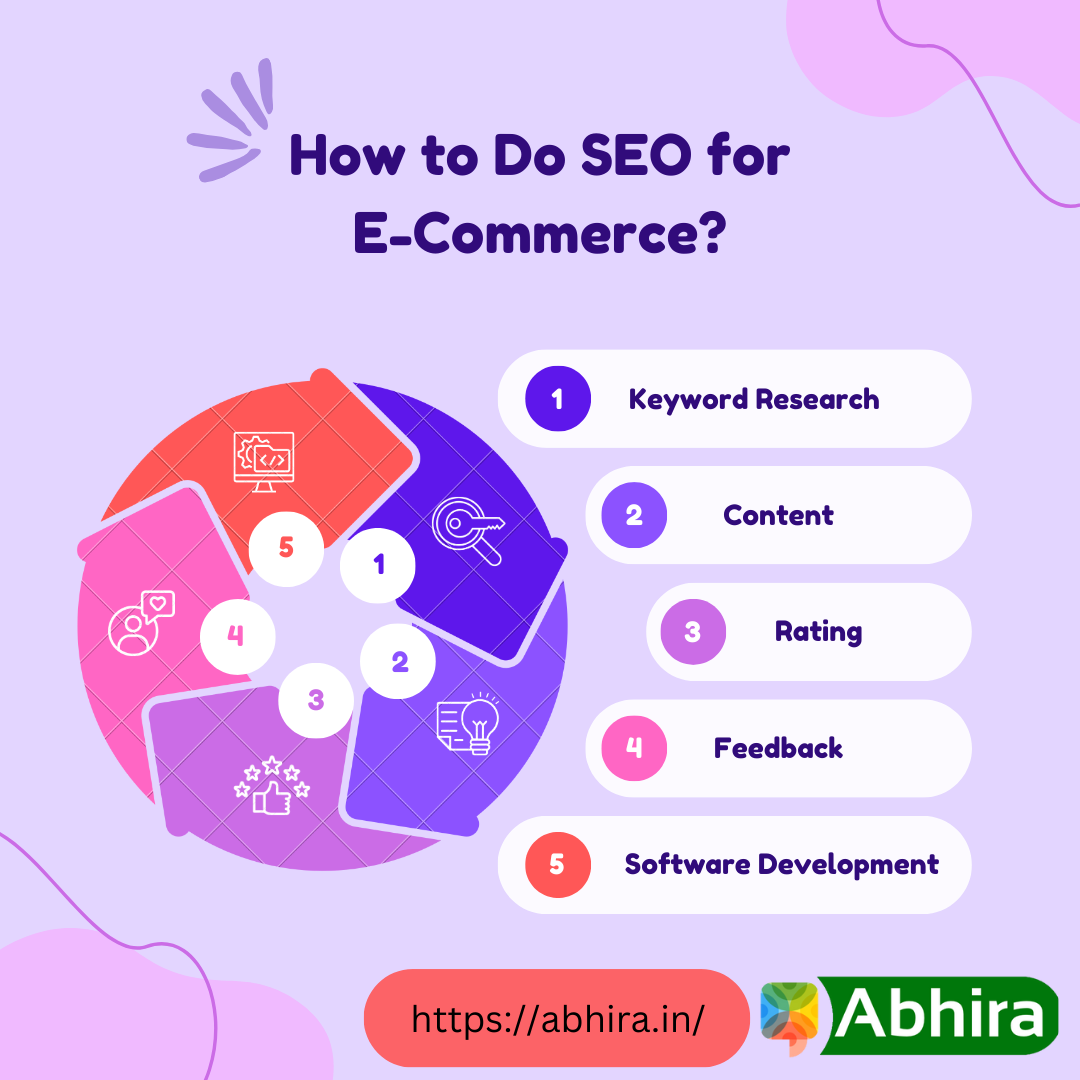How to Do SEO for E-Commerce?

-
Keyword Research:
- Identify relevant and high-converting keywords related to your products.
- Focus on long-tail keywords that reflect user intent and specific product queries.
- Utilize tools like Google Keyword Planner or SEMrush for keyword research.
-
On-Page Optimization:
- Optimize product pages with unique and compelling meta titles and descriptions.
- Include target keywords naturally in product titles, headings, and throughout product descriptions.
- Optimize product images with descriptive alt text.
-
Site Structure and Navigation:
- Ensure a clear and user-friendly site structure with logical categories and subcategories.
- Implement breadcrumb navigation for easy user navigation and search engine understanding.
- Use a sitemap to help search engines index your pages effectively.
-
Mobile Optimization:
- Optimize your e-commerce site for mobile devices as a significant portion of users shop on smartphones.
- Ensure responsive design and fast-loading pages for a seamless mobile experience.
-
Product Schema Markup:
- Implement structured data (schema markup) to provide search engines with detailed information about your products.
- Rich snippets can enhance the visibility of your products in search results.
-
User-Generated Content:
- Encourage customer reviews and ratings for your products.
- User-generated content not only boosts SEO but also builds trust among potential customers.
-
High-Quality Content:
- Create informative and engaging content, such as blog posts, buying guides, or tutorials related to your products.
- Diversify your content to capture a broader audience and establish your site as an authoritative resource.
-
Optimized URLs:
- Use SEO-friendly URLs that include relevant keywords and are easy to understand.
- Avoid dynamic URLs with unnecessary parameters.
-
Technical SEO:
- Regularly audit and fix crawl errors, broken links, and duplicate content.
- Optimize page speed for faster loading times, which is crucial for user experience and SEO.
-
Secure Website (HTTPS):
- Ensure your e-commerce site has an SSL certificate, making it secure for users.
- Google considers HTTPS as a ranking factor, and it builds trust with customers.
-
Social Media Integration:
- Leverage social media to promote products and drive traffic to your e-commerce site.
- Social signals can indirectly impact search engine rankings.
-
Continuous Monitoring and Analytics:
- Use tools like Google Analytics to monitor website performance, user behavior, and keyword rankings.
- Regularly update your SEO strategy based on performance data and algorithm changes.

Buscar
Patrocinados
Patrocinados
Categorías
- Web Development
- Art
- Causes
- Crafts
- Dance
- Drinks
- Film
- Fitness
- Food
- Juegos
- Gardening
- Health
- Home
- Literature
- Music
- Networking
- Other
- Party
- Religion
- Shopping
- Sports
- Theater
- Wellness
Read More
Creating a build host website can be an exciting project! Here’s a step-by-step guide to help you get started, covering key components like design, functionality, and technology stack.
1. Define Your Purpose
Determine the specific purpose of your build host website. Are you...
How to Remove Malware from a WordPress Site: A Step-by-Step Guide
Discovering malware on your WordPress website can be a stressful experience, but it's crucial to...
Toulene Market Size, Competitive Landscape, Regional Outlook and COVID-19 Impact Analysis 2023
Introduction:
Toluene is an aromatic hydrocarbon commonly derived from petroleum and coal tar....
Customizing WordPress REST API: A Complete Guide
WordPress REST API is a powerful feature that allows developers to interact with WordPress data...
Bigg Boss 18 Winner LEAKED? Wikipedia Says THIS Finalist Will Win The Show
When you search for Bigg Boss' page on the website, this contestant shows up as the winner of the...
© 2025 Abhira Social Media
 Spanish
Spanish


